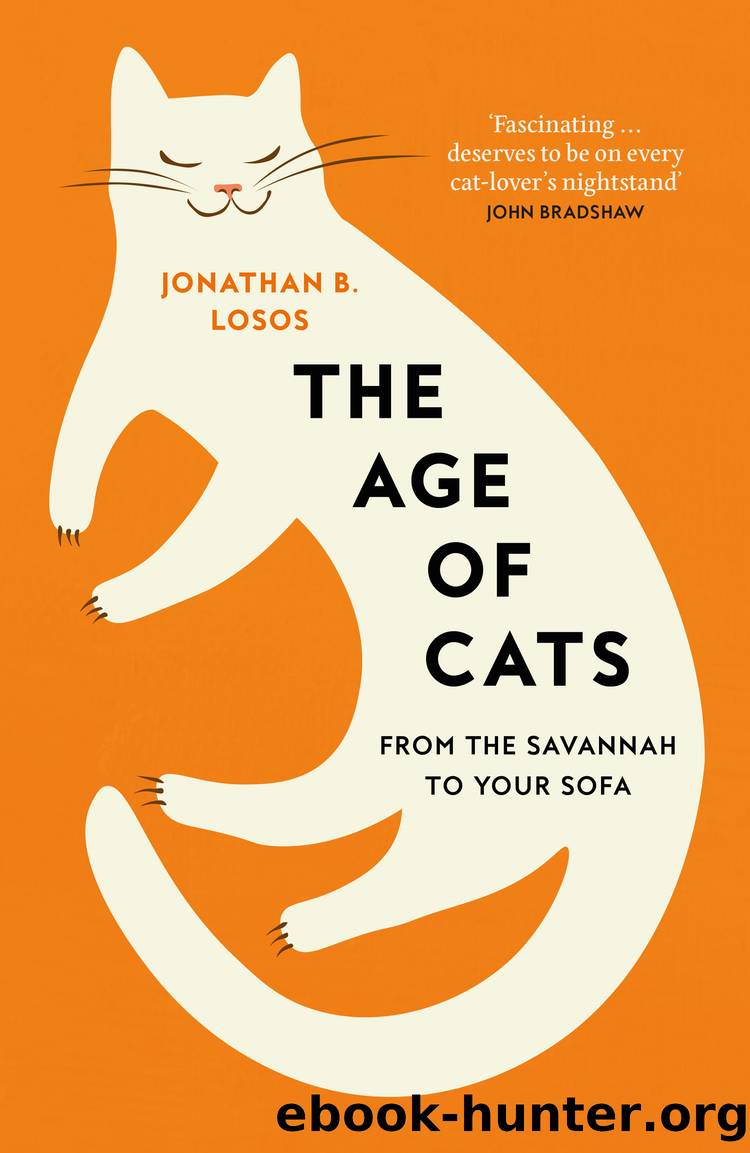The Age of Cats by Jonathan B. Losos

Author:Jonathan B. Losos [B. Losos, Jonathan]
Language: eng
Format: epub
Publisher: HarperCollins Publishers
Published: 2023-04-14T12:00:00+00:00
A FEW YEARS BEFORE SAUSMAN embarked on her project, another Southern Californian hatched a similar plan to create a miniature version of nothing less than the largest cat in the world, the tiger.
That Judy Sugden had such a grand vision is no surprise. Like Sausman, sheâs artistic, though in a different way. An architect by training, she was imaginative enough to envision new creations and organized enough to figure out how to make them happen. Sugden also had a predisposition that Sausman didnât have. Jean Mills, the woman who created the Bengal, was her mother. As a result, Sugden had grown up sculpting new cats, and if her mom had made a little leopard, wasnât a tiny tiger the logical next step? Sugdenâs goal was simple. Combine the essence of the tigerâbig-boned and powerful, orange with black stripesâwith the character of the domestic catâfriendly.
Creating a tiger-striped domestic cat was more of a challenge than you might expect. Orange cats exist, and mackerel tabbies have vertical black stripes. Youâd think all youâd need to do is mate the two to combine the traits.
But thereâs a catch. The allele that produces orange affects all the markings on a cat, not just the background color. Orange mackerel tabbies exist, but their stripes are not black, just a darker shade of orange.[7] Garfield fans take noteâyour idol is a biological impossibility.
And thereâs a second difficulty. Tabby stripes have a different arrangement than tiger stripes. Tabby striations are very linear, like bars in a jail cell. By contrast, the tiger pattern is more of an interbraiding of stripes originating from the midline of the back with others coming up from the belly. Moreover, some of these stripes branch, and some of the branches then come back together, forming enclosed spaces.[8] Tony the Tiger fans take noteâyour favorite cereal spokesman has domestic cat, rather than tiger, striping.
Sugdenâs playbook for creating the Toygerâas the new breed was inelegantly namedâwas very much the same as Sausmanâs. She started with a Bengal with three important traitsâa tan coat, thick bones, and a loving dispositionâand bred him with a stray mackerel tabby with prominent stripes. As the project proceeded, cats with other tiger-like features were carefully added to the mix. The inclusion many years later of a Bengal with rosettes was particularly important because Sugden figuredâcorrectly, it turns outâthat the genes for rosettes might combine with those for mackerel tabby markings to produce elongated rosettes resembling branching tiger stripes (Bengals with rosettes didnât exist when the project started). She also added cats with slightly warmer, âorangierâ tones, eventually getting the color she wanted without using the allele that typically produces orange color in housecats. Generation after generation, she chose the offspring that had the best features and kept on breeding them, getting closer, âsquinch by squinch,â to the look for which she was aiming.
Download
This site does not store any files on its server. We only index and link to content provided by other sites. Please contact the content providers to delete copyright contents if any and email us, we'll remove relevant links or contents immediately.
Sapiens: A Brief History of Humankind by Yuval Noah Harari(13053)
The Tidewater Tales by John Barth(12030)
Do No Harm Stories of Life, Death and Brain Surgery by Henry Marsh(6336)
Mastermind: How to Think Like Sherlock Holmes by Maria Konnikova(6236)
The Thirst by Nesbo Jo(5785)
Why We Sleep: Unlocking the Power of Sleep and Dreams by Matthew Walker(5642)
Sapiens by Yuval Noah Harari(4537)
Life 3.0: Being Human in the Age of Artificial Intelligence by Tegmark Max(4507)
The Longevity Diet by Valter Longo(4445)
The Rules Do Not Apply by Ariel Levy(3906)
The Immortal Life of Henrietta Lacks by Rebecca Skloot(3826)
The Body: A Guide for Occupants by Bill Bryson(3802)
Why We Sleep by Matthew Walker(3773)
Animal Frequency by Melissa Alvarez(3755)
Yoga Anatomy by Kaminoff Leslie(3701)
Barron's AP Biology by Goldberg M.S. Deborah T(3632)
The Hacking of the American Mind by Robert H. Lustig(3580)
All Creatures Great and Small by James Herriot(3516)
Yoga Anatomy by Leslie Kaminoff & Amy Matthews(3396)
